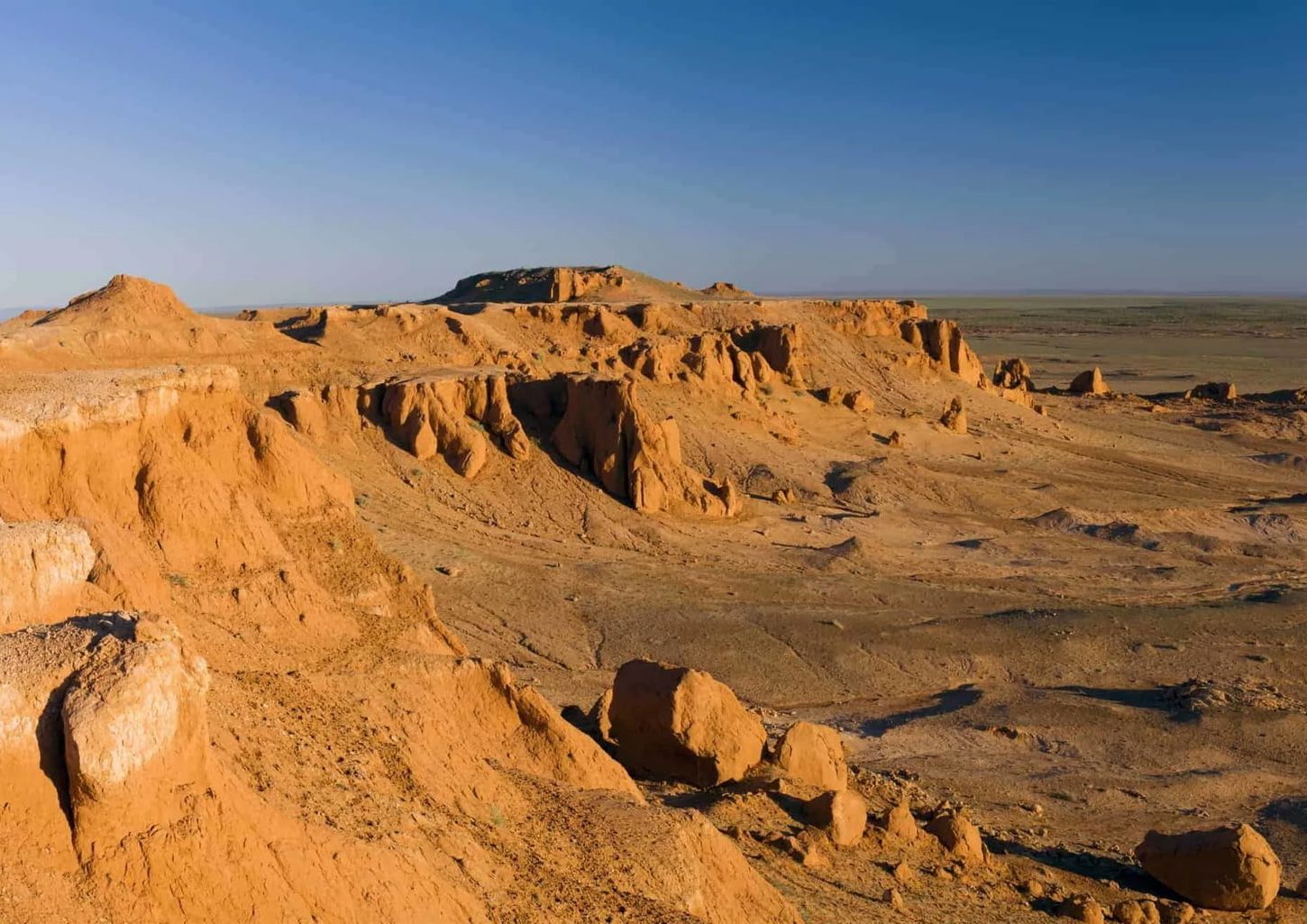The Gobi Desert is a land of extremes, from its scorching days and freezing nights to its rich history as part of the ancient Silk Road. Home to rare species like the wild Bactrian camel and elusive snow leopards, the Gobi also guards secrets like the eerie “Singing Dunes” and the first dinosaur eggs ever discovered.
With ancient ruins and rumors of hidden treasures, this desert is more than just sand — it’s a fascinating blend of nature, history, and mystery. Get ready to uncover fun facts about the Gobi Desert that will surprise and intrigue you.
1. The Gobi is Expanding
The Gobi Desert is one of the fastest-expanding deserts in the world, growing at an alarming rate. Each year, the desert encroaches on surrounding grasslands, particularly in China and Mongolia, by about 3,600 square kilometers. This rapid expansion is primarily driven by desertification, exacerbated by human activities such as overgrazing and deforestation, as well as by climate change, which reduces rainfall and increases temperatures.
Efforts to halt the Gobi’s spread include large-scale ecological projects like the “Great Green Wall” in China, a massive tree-planting initiative aimed at creating a barrier to desert expansion. However, the desert’s growth continues to pose significant challenges to the region’s ecosystems and agriculture.
2. The Flaming Cliffs’ Fossil Trove
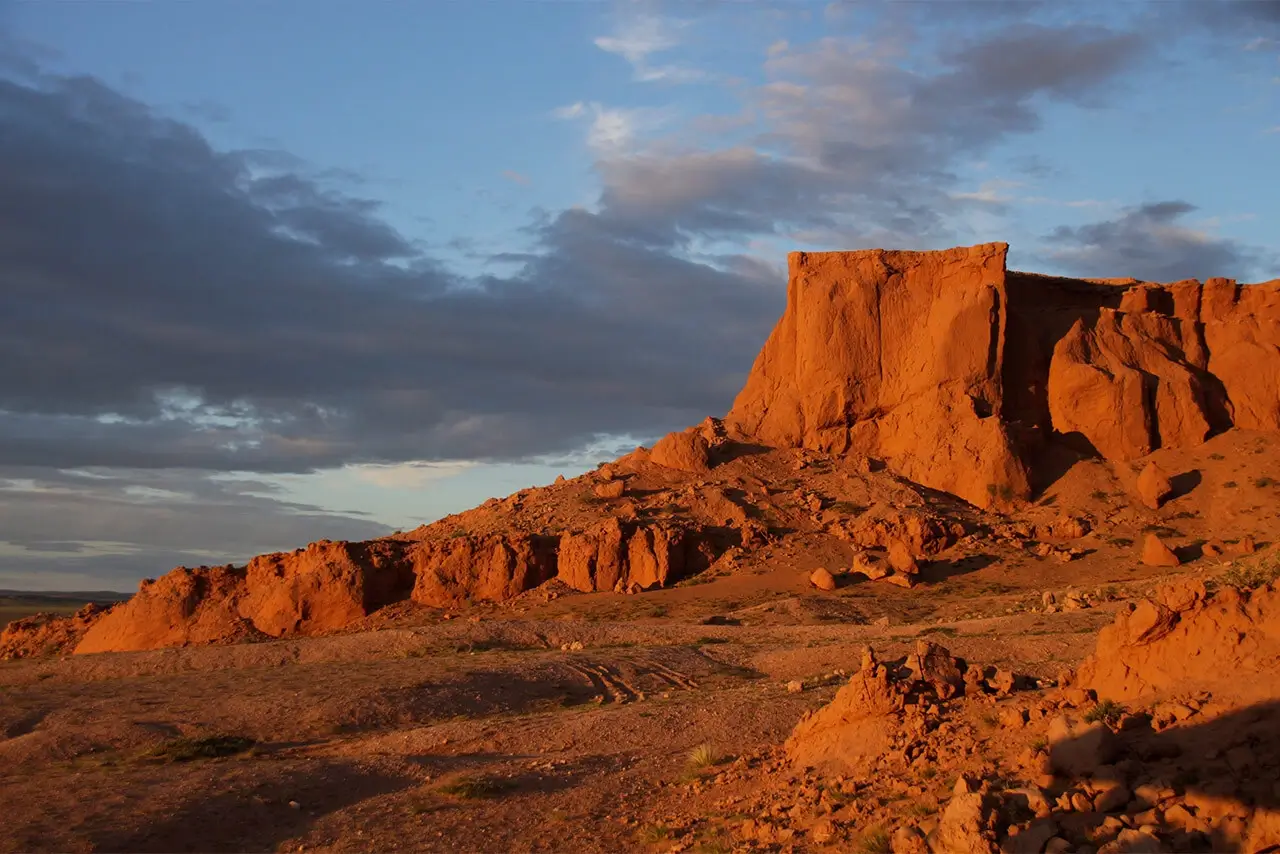
Image: threecamellodge.com
The Flaming Cliffs in Mongolia’s Gobi Desert, also known as Bayanzag, are a globally renowned site for dinosaur fossils. Discovered by American explorer Roy Chapman Andrews in the 1920s, this area has since yielded some of the most significant paleontological finds of the 20th century. Among these discoveries are the first-ever identified dinosaur eggs, which were initially attributed to Protoceratops but later found to belong to Oviraptor. The site has also revealed fossils of the famous Velociraptor, a sharp-clawed predator popularized by the Jurassic Park movies.
The cliffs themselves are composed of red sandstone, which glows brilliantly under the setting sun, earning them the name “Flaming Cliffs.” Over millions of years, erosion has exposed layers of rock, revealing a treasure trove of ancient remains that provide insights into the Cretaceous period’s ecosystems. The region continues to be a hotspot for paleontologists, with ongoing discoveries that further our understanding of dinosaur behavior, including evidence of nesting practices.
3. Harsh Temperature Swings
The Gobi Desert is known for its extreme temperature fluctuations, with daily changes that can range up to 63°F (35°C) within a single day. This phenomenon occurs due to the Gobi’s high elevation and arid climate.
During summer, temperatures can soar to 113°F (45°C) in the afternoon, only to plummet to near-freezing levels by nightfall. Conversely, in winter, the desert experiences biting cold, with temperatures dropping as low as -40°F (-40°C). These drastic swings make the Gobi one of the most challenging environments for both humans and wildlife to endure.
4. Ancient Trade Routes
The Gobi Desert played a vital role in the ancient Silk Road, a network of trade routes that connected China with the West. Stretching over 4,000 miles, the Silk Road facilitated the exchange of goods, ideas, and cultures between civilizations.
The Gobi, with its harsh conditions, was a critical segment of this route, where caravans carrying silk, spices, and other valuable items braved the desert’s challenges to reach markets in Central Asia, the Middle East, and beyond. Notably, the city of Dunhuang, located on the edge of the Gobi, served as a major trading hub and cultural melting pot, where diverse groups from different regions interacted and exchanged goods.
5. The Singing Dunes
In the Gobi Desert, some sand dunes, particularly in the Khongoryn Els region, produce a mysterious and mesmerizing sound known as the “Singing Dunes.” This low-frequency humming or booming noise occurs when millions of sand grains slide down the dunes’ slopes, usually triggered by the wind or human activity. The sound can vary in pitch and intensity, sometimes resembling the distant hum of an airplane or the deep tone of a musical instrument.
Scientific research suggests that the phenomenon is caused by the friction between sand grains of a specific size and moisture content. Similar sounds have been documented in other deserts, but the Gobi’s Singing Dunes are among the most famous for this acoustic marvel.
6. Dinosaur Eggs Discovery
In the 1920s, the Gobi Desert became the site of one of the most groundbreaking paleontological discoveries: the first scientifically recognized dinosaur eggs. American paleontologist Roy Chapman Andrews led the Central Asiatic Expeditions, which uncovered these fossilized eggs at the Flaming Cliffs in 1923. This discovery was revolutionary, confirming for the first time that dinosaurs laid eggs, a hypothesis that had been debated among scientists.
The eggs, believed to belong to a species of theropod dinosaur, likely a Protoceratops, have since provided invaluable insights into dinosaur reproduction and behavior. The Gobi remains one of the richest dinosaur fossil sites in the world, attracting scientists from across the globe.
7. Extreme Drought Conditions
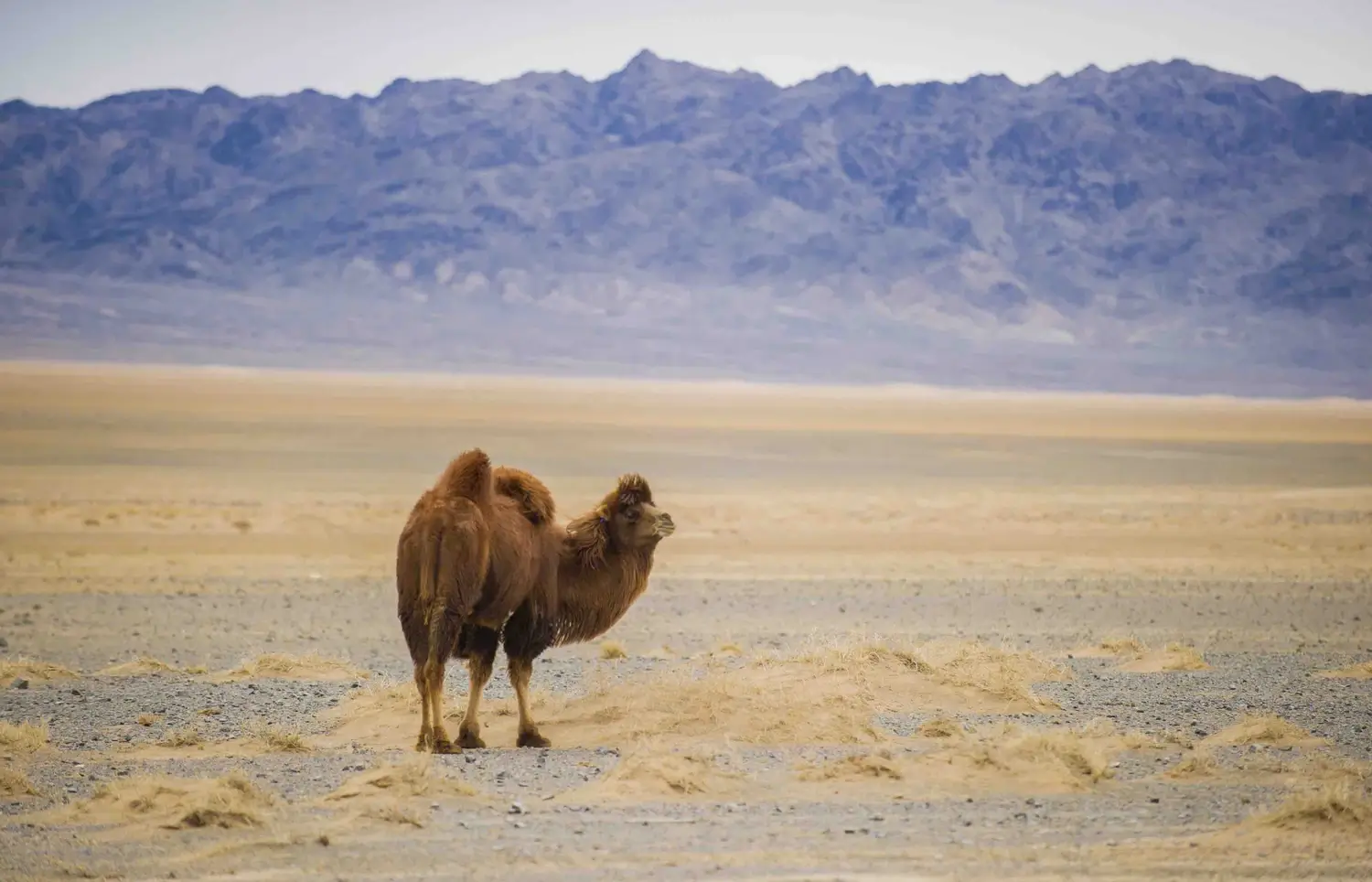
Image: escapetomongolia.com
The Gobi Desert is notorious for its extreme drought conditions, with some regions receiving less than 7 inches (approximately 178 mm) of rainfall annually. This severe aridity is largely due to the desert’s location in the rain shadow of the Himalayas, which blocks moist air from reaching the area.
The sparse rainfall is unpredictable and often comes in short, intense bursts, leading to rapid evaporation. These harsh conditions make the Gobi one of the driest places on Earth, challenging the survival of both wildlife and human populations. The extreme droughts also contribute to the desert’s expansion, encroaching on surrounding grasslands.
8. Underground Rivers
Despite the Gobi Desert’s arid surface, underground rivers flow beneath, sustaining local ecosystems in this harsh environment. These hidden water sources are crucial for both wildlife and human settlements, enabling the survival of species such as the Gobi bear and the Bactrian camel.
The rivers often originate from mountain ranges surrounding the Gobi and flow through subterranean channels before emerging in oases or being tapped by wells. The existence of these underground rivers highlights the delicate balance between life and the extreme desert conditions, playing a vital role in the region’s biodiversity.
9. Mongolian Death Worm Myth
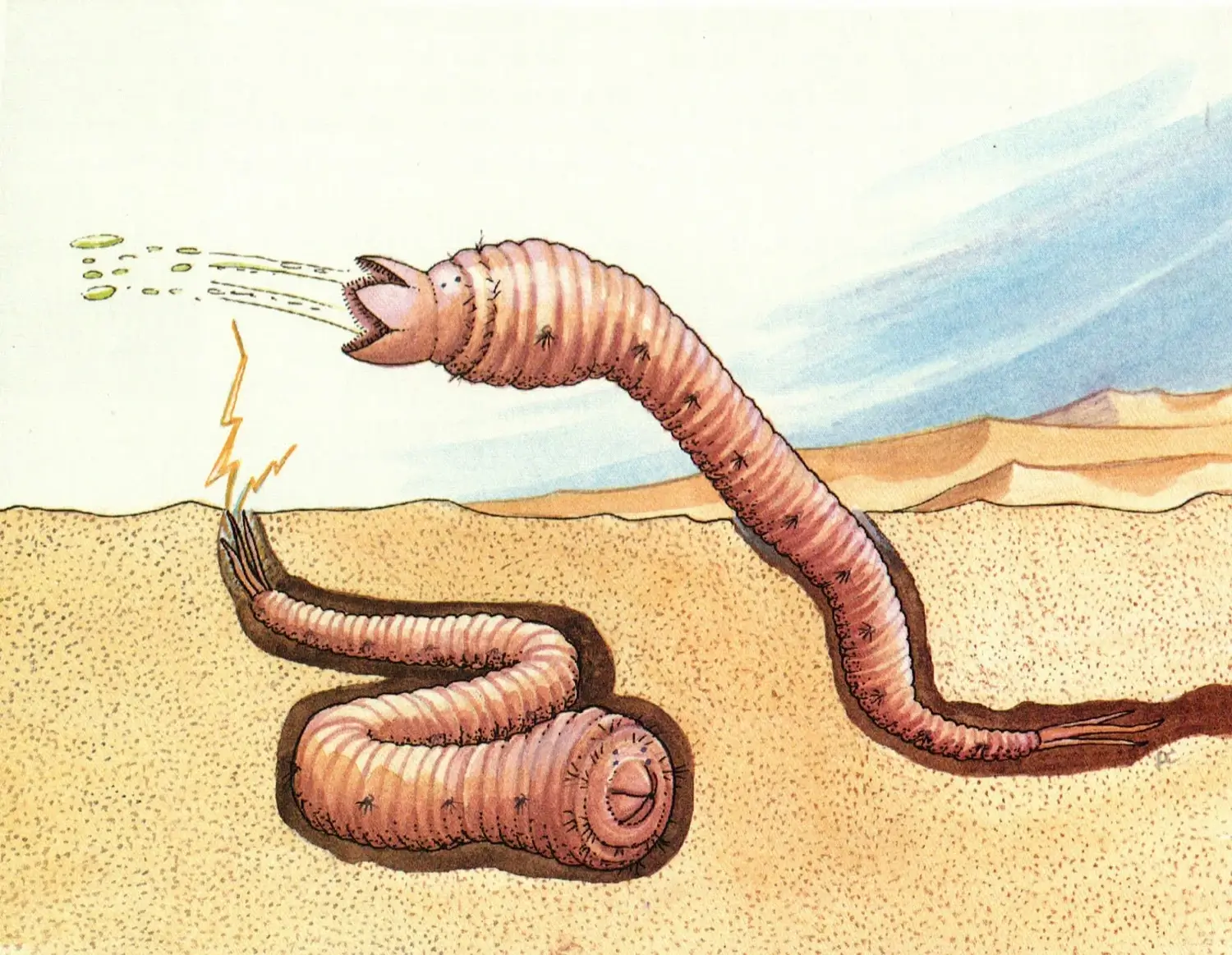
Image: 4.bp.blogspot.com
The Gobi Desert is home to the legendary Mongolian Death Worm, known locally as the Olgoi-Khorkhoi. This creature, described as a bright red, sausage-shaped worm, allegedly reaches up to 5 feet in length. According to folklore, the Death Worm can kill with a deadly venom or even an electric shock.
Despite numerous expeditions and investigations, no concrete evidence of the creature’s existence has ever been found. The Death Worm remains a staple of Mongolian folklore, with locals swearing by its presence in the remote regions of the Gobi Desert.
10. Largest Dinosaur Cemetery
The Gobi Desert is home to some of the most important dinosaur fossil sites in the world. Known as the largest dinosaur cemetery, it contains fossil deposits dating back to the Late Cretaceous period.
Paleontologists have uncovered more than 80 dinosaur genera and over 60 distinct fossil sites. Notable discoveries include the first fossilized dinosaur eggs found in the 1920s at Bayanzag, also known as the Flaming Cliffs, by American explorer Roy Chapman Andrews. These discoveries provide crucial insights into the last phase of dinosaur evolution.
11. Ancient Cities Ruins

Entrance to the Mogao Caves, Dunhuang, Gansu province, China. Image: britannica.com
The Gobi Desert, a key part of the ancient Silk Road, is scattered with ruins of once-thriving cities. These cities, such as Dunhuang in China, were vital trading hubs, linking East and West. Dunhuang was known for the Mogao Grottoes, a UNESCO World Heritage Site featuring over 700 Buddhist cave temples, while other ruins like the Yang Pass and the Jade Gate Pass served as critical defense points during the Han Dynasty (206 BC – 220 AD). These ancient remnants reflect the desert’s rich history of commerce, culture, and military importance along the Silk Road.
12. Nomadic Life
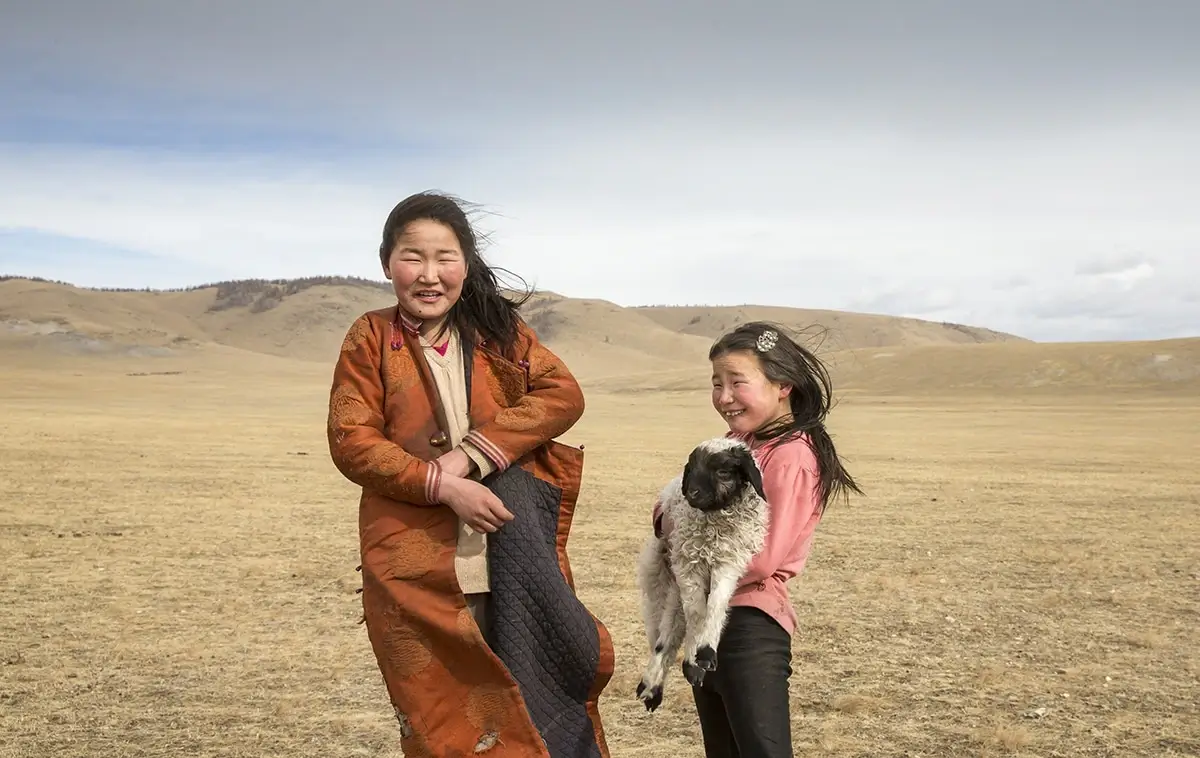
Mother and daughter, Mongolia, Gobi desert. Image: meanwhileinmongolia.com
In the Gobi Desert, many nomadic tribes still maintain their traditional lifestyle, passed down through generations. These nomads, primarily herders, live in portable yurts known as gers and rely on their animals for survival, including goats, sheep, camels, and horses. Despite the harsh environment—marked by extreme temperatures, lack of rainfall, and desertification—these herders adapt by moving their camps to find suitable grazing areas for their livestock.
Technology has made its way into this ancient lifestyle, with herders using solar panels for electricity and dirt bikes to round up their animals across the vast desert. Despite these modern tools, the nomads’ lives remain deeply connected to the land, battling the effects of climate change and desertification, which threaten their way of life.
13. A Desert of Contrasts
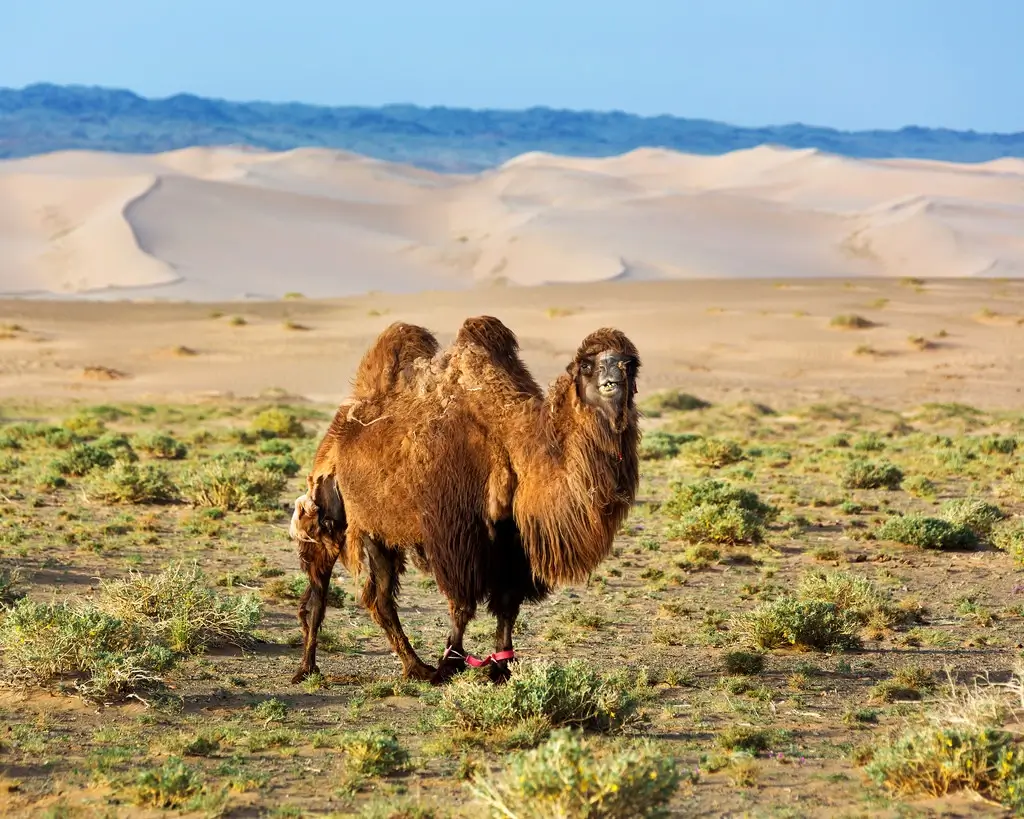
Image: endlessloopphotography.com
The Gobi Desert is a striking example of nature’s diversity, featuring an ever-changing landscape of sand dunes, mountain ranges, and vast steppes. While parts of the desert, like the famous Khongoryn Els dunes, are covered in towering sand formations, much of the Gobi consists of bare rock and gravel plains. Surrounding mountain ranges, including the Altai and Tian Shan, add elevation and dramatic terrain changes.
The Gobi’s eco-regions also include desert steppes and semi-deserts, each with distinct climates and flora. This vast desert is also subject to extreme temperatures, from scorching summers to freezing winters, offering a glimpse into its unique and harsh beauty.
14. Severe Sandstorms
The Gobi Desert is notorious for its severe sandstorms, which can blanket entire regions, sometimes burying villages under layers of sand. These storms, known as “haboobs,” typically occur in the spring when high winds whip up loose dust and sand. The storms can last anywhere from a few hours to several days, reducing visibility to near zero and making travel perilous.
In extreme cases, they’ve engulfed entire communities, such as the village of Minqin in China, which has faced repeated devastation due to encroaching desertification. These storms also contribute to air pollution, affecting not just Mongolia and China but even reaching as far as Korea and Japan.
15. Unique Flora
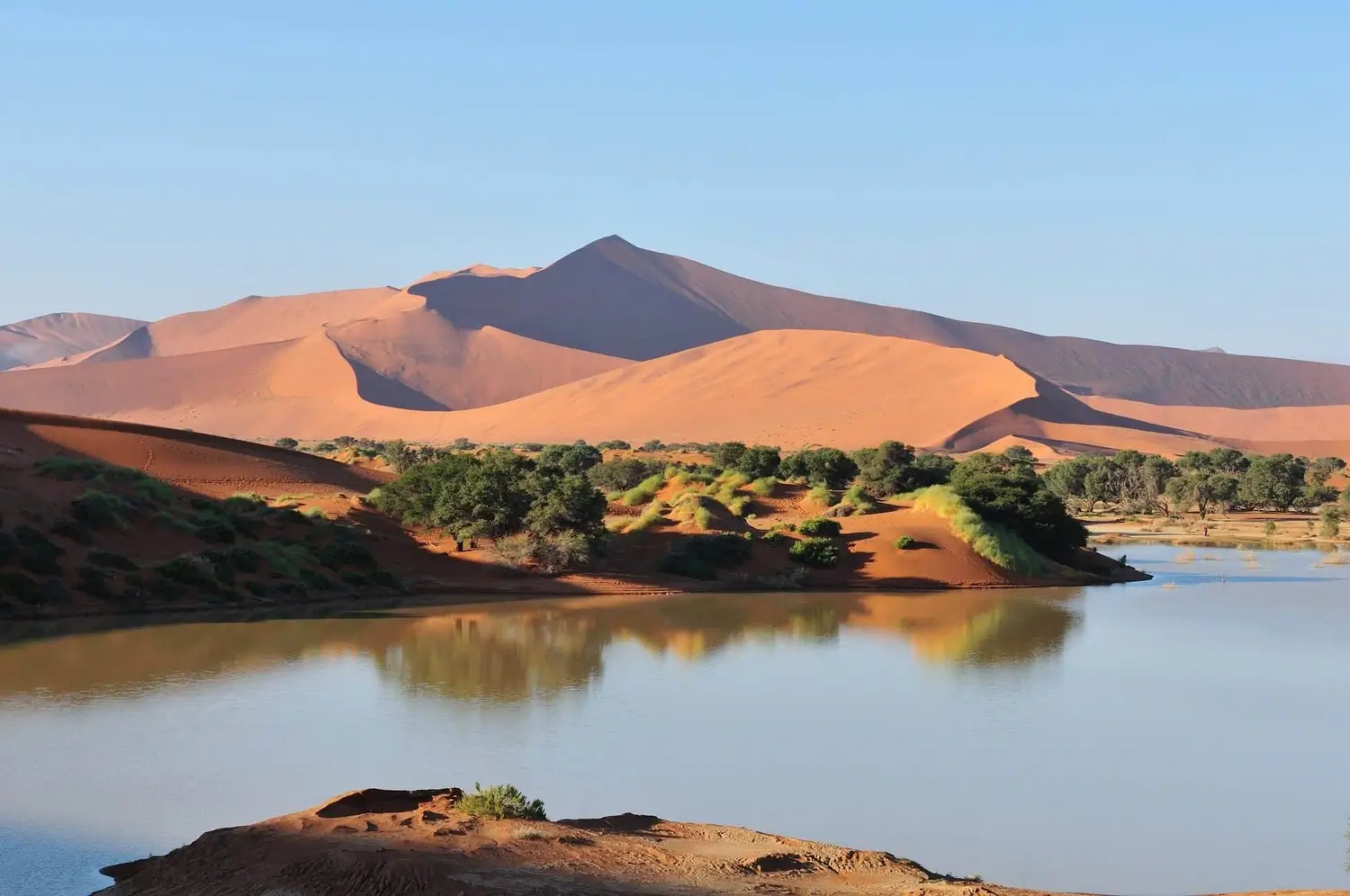
Image: correctmongolia.com
Despite its extreme climate, the Gobi Desert harbors a surprising array of plant life, each species adapted to survive its harsh conditions. The Saxaul tree (Haloxylon ammodendron) dominates much of the desert’s landscape, known for its resilience to drought and its role in preventing soil erosion. Another essential plant is the Mongolian chive (Allium mongolicum), a wild onion that serves both culinary and medicinal purposes.
Peashrubs (Caragana spp.) and needlegrass are widespread, providing vital grazing material for livestock. These plants play crucial roles in the desert’s ecosystem, supporting both wildlife and the nomadic communities that rely on them.
16. Vast Size
The Gobi Desert spans an incredible 500,000 square miles (1.29 million square kilometers), making it one of the largest deserts in the world. It stretches across northern China and southern Mongolia, with elevations ranging from 1,600 to 5,000 feet.
Unlike other deserts, only about 5% of the Gobi is made up of sand dunes. Most of its terrain consists of vast plains, mountain ranges, and dry steppes. Its location in the rain shadow of the Himalayas contributes to its arid conditions. The desert continues to expand, particularly in China, as desertification pushes its boundaries.
17. Legendary Expeditions
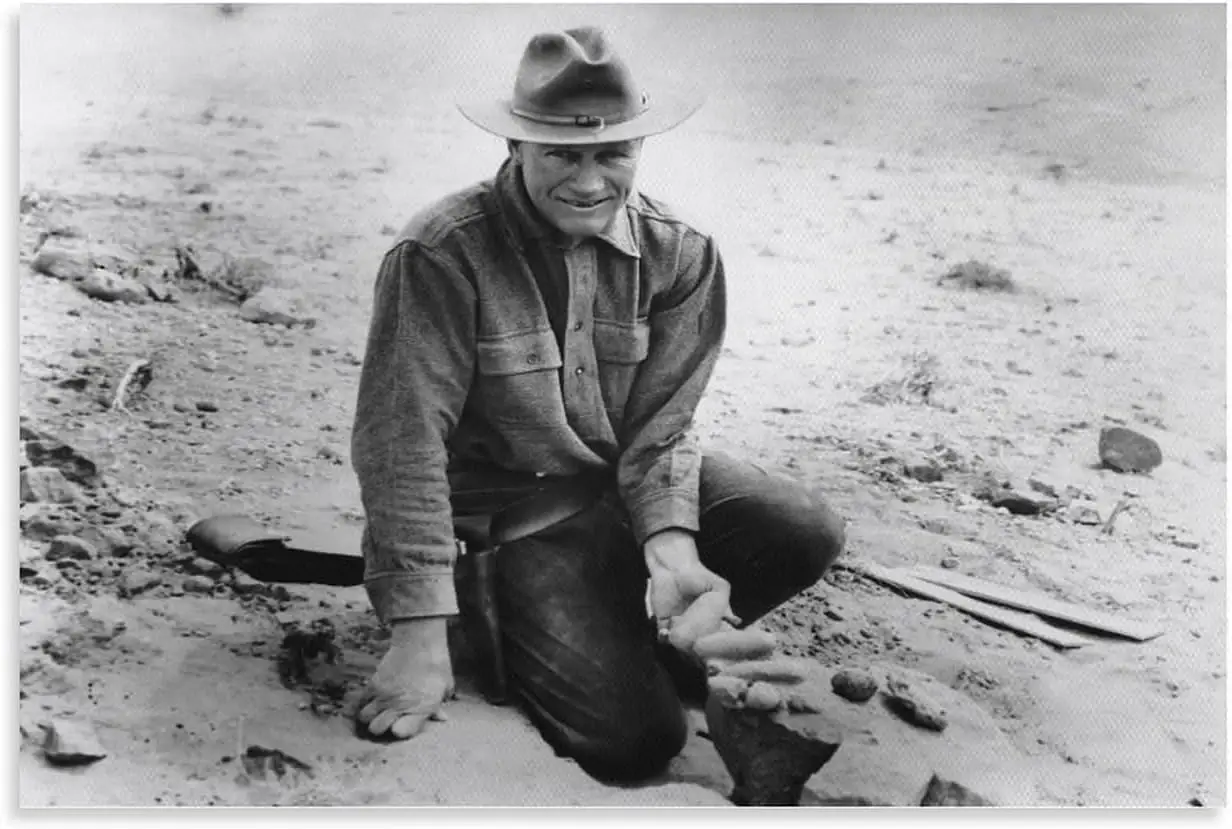
Roy Chapman Andrews. Image: amnh.org
The Gobi Desert has been the site of several legendary expeditions, notably led by Roy Chapman Andrews in the 1920s. Andrews, an explorer and naturalist, embarked on his first Gobi expedition in 1922, under the auspices of the American Museum of Natural History.
These expeditions uncovered groundbreaking fossil discoveries, including the first dinosaur eggs ever found, proving that dinosaurs laid eggs. His findings of new species and fossils in the Gobi reshaped paleontology. Andrews’ adventurous life, filled with narrow escapes from death, is believed to have inspired the creation of the character Indiana Jones.
FAQ
How old is Gobi Desert?
The Gobi Desert is estimated to be around 65 million years old, having formed during the Paleogene Period. The region has continuously evolved due to tectonic shifts and climatic changes, shaping the landscape as it is today.
How did Gobi Desert get its name?
The name “Gobi” is derived from the Mongolian word for “waterless place” or “desert.” It aptly reflects the region’s arid conditions, with vast stretches of barren land and limited water sources.
Does the Gobi Desert have ice?
Yes, the Gobi Desert can have ice in the winter months. Due to its high elevation and extreme continental climate, parts of the Gobi experience freezing temperatures, which lead to the formation of frost and snow, particularly in the northern areas.
Why is Gobi Desert famous?
The Gobi Desert is famous for its rich fossil deposits, particularly of dinosaurs. It’s also known for its extreme climate, varied landscape of dunes, mountains, and steppes, and for being a historic route along the Silk Road.
Is Gobi the coldest desert?
Yes, the Gobi is one of the coldest deserts in the world. It experiences harsh winters with temperatures dropping as low as -40°C (-40°F), making it colder than many other deserts.
How hot is Gobi Desert?
In summer, temperatures in the Gobi Desert can soar to 45°C (113°F). However, the region experiences sharp temperature fluctuations, with extremely hot summers and freezing winters.
Does anyone live in Gobi Desert?
Yes, nomadic tribes have lived in the Gobi Desert for centuries. They primarily rely on livestock for survival and move seasonally to find grazing land and water.
What is the Gobi Desert’s biggest problem?
One of the biggest problems facing the Gobi Desert is desertification, exacerbated by climate change and human activities. This leads to the degradation of land, making it more difficult for both wildlife and humans to sustain their livelihoods.


